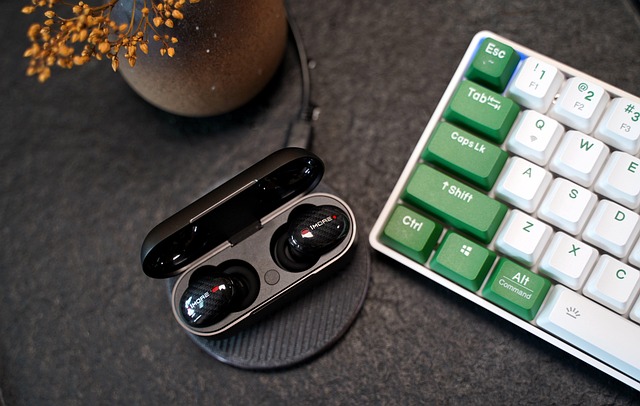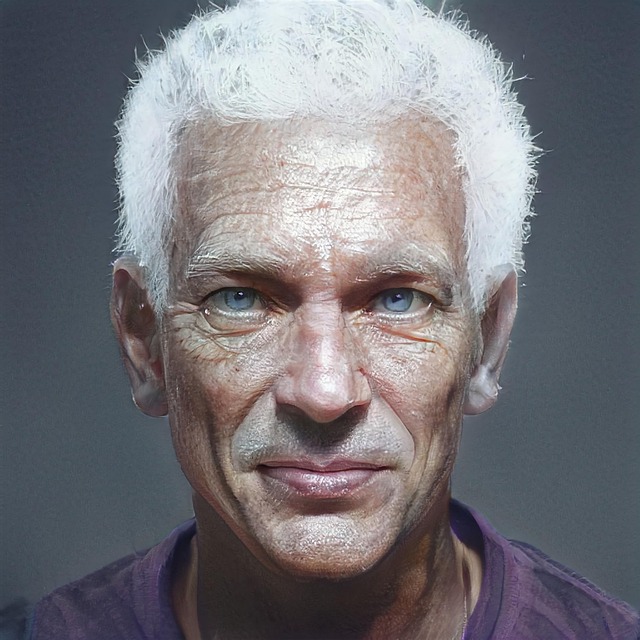Skin aging is a natural process influenced by time, environment, and lifestyle. Anti-aging strategies target wrinkle reduction through diverse methods: topical treatments (collagen synthesis, antioxidant protection), chemical peels/laser therapies (removing damaged layers), microneedling/radiofrequency (boosting collagen production), Intense Pulsed Light (IPL) & Radiofrequency (RF) energy (tightening skin). Topical creams with retinol, peptides, and hyaluronic acid are popular. Laser treatments stimulate collagen and elastin production. Injections like dermal fillers and neurotoxins offer immediate results without surgery. Surgical procedures like facelifts provide dramatic outcomes but are last resorts. Healthy habits like exercise, diet, hydration, and sleep also aid in wrinkle reduction. Future trends include personalized treatments, advanced laser therapies, and natural holistic approaches.
Skin tightening treatments have evolved dramatically, offering diverse options for tackling age-related skin changes. From non-invasive techniques like lasers and topical solutions to surgical procedures, each method targets specific aspects of wrinkle reduction and skin rejuvenation. Understanding the science behind skin aging empowers individuals to make informed choices. This comprehensive guide explores various anti-aging strategies, revealing the latest advancements in the quest for youthful, radiant skin.
Understanding Skin Aging and Wrinkle Formation

Skin aging is a natural process that involves multiple factors, including time, environmental exposure, and lifestyle choices. As we age, our skin undergoes several changes. The most noticeable among them are wrinkles, which form due to a combination of reduced collagen production, loss of elasticity, and sun damage. Collagen is a protein that provides structural support to our skin, while elastin fibers ensure its flexibility. With age, these proteins degrade, leading to fine lines and deep wrinkles. Additionally, sun exposure over the years can cause photoaging, further accelerating wrinkle formation by damaging collagen and elastin fibers. Understanding these mechanisms is crucial for developing effective anti-aging strategies, focusing on treatments that enhance collagen production and protect existing skin structure.
To combat wrinkling, many anti-aging treatments focus on wrinkle reduction. This involves a multi-faceted approach, including topical applications of retinoids, peptides, and antioxidants to stimulate collagen synthesis and protect the skin from oxidative stress. Chemical peels and laser therapies are also popular options that work by removing damaged skin layers and promoting new, smoother skin growth. In recent years, non-invasive procedures like microneedling and radiofrequency treatments have gained popularity for their ability to boost collagen production and improve skin texture without significant downtime. These advanced techniques offer promising results in the quest for youthful-looking skin.
Non-Invasive Methods for Skin Tightening

Non-invasive methods have gained significant popularity in the skin tightening and anti-aging industry, offering effective solutions for those seeking to combat wrinkles and improve skin elasticity without undergoing surgical procedures. These treatments leverage advanced technologies and natural processes to stimulate collagen production, enhance skin firmness, and reduce fine lines. One prominent non-invasive technique is intense pulsed light (IPL), which uses specific wavelengths of light to target pigmented spots, broken blood vessels, and damaged skin cells, leading to a more even and youthful complexion.
Another promising approach is radiofrequency (RF) energy, where controlled waves are delivered into the skin to heat up the deeper layers, triggering collagen synthesis and improving tissue tightness. Topical treatments, such as retinoids and peptides, also play a crucial role in non-invasive wrinkle reduction. These active ingredients stimulate cellular turnover, boost collagen levels, and provide long-lasting hydration, resulting in a smoother and more radiant appearance.
Topical Creams and Serums for Wrinkle Reduction

Topical creams and serums are a popular choice for those seeking to combat signs of aging, particularly wrinkles. These formulations contain a range of active ingredients designed to stimulate collagen production, enhance skin elasticity, and reduce the appearance of fine lines and wrinkles. Key players in this category include retinol, peptides, and hyaluronic acid. Retinol, a derivative of vitamin A, is well-known for its ability to exfoliate dead skin cells and encourage the formation of new, smooth skin. Peptides, on the other hand, mimic the body’s natural proteins to support collagen synthesis, while hyaluronic acid attracts and retains moisture, plumping up fine lines from within.
When selecting a topical product for wrinkle reduction, it is essential to choose one suitable for your skin type and needs. Additionally, consistency in application is key; regular use will yield the best results. Remember that patience is also vital, as these treatments may take several weeks or even months to show noticeable improvements.
Laser Treatments for Youthful Skin

Laser treatments have emerged as a popular and effective method for achieving youthful, radiant skin. These non-invasive procedures use targeted lasers to stimulate collagen production and boost elastin fibers, resulting in significant improvements in skin texture and tone. By breaking down damaged tissue and stimulating healthy cell regeneration, laser treatments can effectively reduce the appearance of wrinkles, fine lines, and age spots, giving you a more youthful glow.
There are various types of laser treatments available, each tailored to specific skin concerns. For instance, fractional lasers work by creating tiny holes in the skin, prompting the body to produce new collagen in an effort to heal these micro-injuries, leading to smoother, tighter skin. On the other hand, intense pulsed light (IPL) therapies use a range of wavelengths to target different skin issues, from pigmented spots to broken blood vessels and wrinkles. These treatments offer minimal downtime and provide long-lasting results, making them appealing choices for those seeking effective wrinkle reduction without extensive recovery periods.
Injections: Fillers and Toxins for a Lift

Injections are a popular non-surgical method for skin tightening and wrinkle reduction, offering immediate results and minimal downtime. Two commonly used treatments are dermal fillers and neurotoxins. Dermal fillers, such as hyaluronic acid or collagen, are injected into the skin to add volume and smooth out fine lines and wrinkles. This process plumps up the skin, creating a more youthful appearance. On the other hand, neurotoxins like botulinum toxin (Botox) work by temporarily paralyzing muscles, which can prevent dynamic wrinkling caused by facial expressions.
These injections provide a quick fix for those seeking immediate improvements in their skin’s texture and overall look. They are safe, minimally invasive, and effective for various face areas, including the forehead, crow’s feet, and cheekbones. Many people opt for these treatments as a fast way to achieve younger-looking skin without the need for extensive procedures.
Surgical Options for Skin Tightening

Surgical procedures offer more drastic but potentially effective solutions for skin tightening and wrinkle reduction. One popular method is a face lift, which involves surgically lifting and tightening facial tissues to improve contours and reduce wrinkles. Another option is body contouring surgeries like abdominoplasty or breast reduction, which not only enhance body shape but can also lead to increased skin elasticity and a more youthful appearance. These procedures are often considered last resorts due to their invasiveness and recovery time but can deliver remarkable results for those seeking significant changes.
For targeted treatments, surgical options like chemical peels or laser resurfacing can be employed. These techniques remove outer skin layers to stimulate collagen production, resulting in smoother, more youthful-looking skin. Each surgery comes with its own set of risks and benefits, so it’s crucial to consult with a qualified healthcare professional who can guide you through the best choice based on your specific needs and goals for wrinkle reduction.
Lifestyle Changes to Combat Aging

Adopting a healthy lifestyle is an often-overlooked yet powerful tool in the fight against aging. Regular exercise, for instance, boosts blood circulation, which in turn enhances collagen production and improves skin elasticity, reducing the appearance of wrinkles. A balanced diet rich in antioxidants from fruits and vegetables helps protect the skin from damage caused by free radicals, a major contributor to premature aging.
Additionally, staying hydrated is crucial; drinking ample water keeps the skin moisturized, plumping it up and minimizing fine lines. Adequate sleep is another essential factor; during rest, the body produces more human growth hormone (HGH), which aids in collagen synthesis, resulting in a more youthful complexion. These lifestyle changes, when incorporated into your daily routine, can significantly complement anti-aging treatments for optimal wrinkle reduction.
Future Trends in Anti-Aging Skin Care

The future of anti-aging skincare looks promising, with a focus on personalized treatments and innovative technologies. One emerging trend is the use of advanced laser therapies for targeted wrinkle reduction. These high-tech solutions offer precise penetration into the skin layers, stimulating collagen production and improving skin elasticity. With continuous advancements, we can expect more effective and safe procedures to combat age-related skin changes.
Additionally, there’s a growing interest in natural, holistic approaches to anti-aging. This includes harnessing the power of plant-based actives and regenerative medicines. Future trends may see a shift towards tailored skincare routines incorporating bioactive ingredients known for their anti-inflammatory and antioxidant properties, offering a more sustainable and gentle method of wrinkle reduction.
